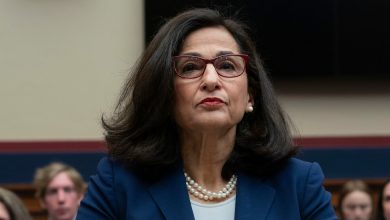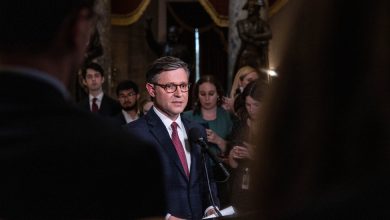Child Care: New York’s Next Big-Ticket Budget Priority

While she was lieutenant governor, Kathy Hochul repeatedly warned of a child care crisis in New York, where rising costs had put thousands of providers out of business and had left many families with few options for care.
Ms. Hochul, now the state’s first female governor, moved quickly to address the issue. In her first executive budget proposal, she called for the state to increase its spending to $1.4 billion on child care, expanding subsidies, creating day care centers at public universities and giving additional support for providers.
But the Democratic-led Legislature in New York said that was not nearly enough.
Lawmakers say the state should spend billions but also quickly widen eligibility for subsidized child care — a move that they said lays the groundwork for a much bolder vision.
“We’re clearly on a path to reach a full, universal system in which all people are eligible for subsidized child care,” said Senator Jabari Brisport of Brooklyn, who helped craft the Senate plan. It called for committing $2.2 billion to make child care free immediately for all low-income families, and increasing the number of families who would receive benefits each year.
The current threshold is 200 percent of the federal poverty line of $27,750 for a family of four; the Senate plan would allow families earning up to five times the poverty line to qualify for subsidized care by 2024, which would raise the state’s commitment to more than $4 billion.
The Assembly proposal is only slightly less ambitious, calling for the state to spend $3 billionto subsidize care for families earning up to four times the federal limit — or $111,000 for a family of four — within three years. Ms. Hochul’s plan would reach families earning up to three times the federal limit in that time.
With both the governor and Legislature determined to act on the issue, New York seems poised to enact a significant expansion of state aid for child care in its upcoming budget, which is due April 1.
A handful of cities and states have advanced plans designed to expand access to child care, but New York’s proposals are among the most ambitious. And with federal child care funding stalled in President Biden’s Build Back Better legislation, the resolutions have taken on a national significance.
“These are historic proposals, there’s no other way to put it,” said Dede Hill, policy director at the Schuyler Center for Analysis and Advocacy, a nonprofit public policy institute. “New York would be moving to a new vision, a new way of thinking about child care, and that would be really remarkable.”
The next steps will all depend on negotiations among the state’s top leaders, once called the “three men in a room,” who control the budget. This is the first year in which two of them — the Senate majority leader, Andrea Stewart-Cousins, and Ms. Hochul — are women. The third is the Assembly speaker, Carl Heastie.
Under Ms. Stewart-Cousins and Mr. Heastie, the Legislature has shifted leftward, often finding itself to the left of Ms. Hochul’s predecessor, Andrew M. Cuomo.
Ms. Hochul, a centrist from western New York, will need to balance the Legislature’s political demands with her own politics and reality: She is seeking election for her first full term as governor in November and will also face a contested primary in June.
Part of that balancing act will be aided by a surplus in state revenues because of an infusion of federal pandemic aid and better-than-expected tax receipts — although that same surplus could make it hard to hold the line with the Legislature, which has proposed significant budget increases.
Starved by decades of disinvestment, New York’s child care system was suffering before the pandemic, with long waiting lists and high fees that made it inaccessible for many parents. Many day care centers shut temporarily when coronavirus hit, then never reopened.
A December 2021 report from the Office of Children and Families found that 64 percent of New Yorkers live in “child care deserts.” At the same time, child care workers — a vast majority of whom are women — struggle to afford basics.
“The Covid-19 pandemic highlighted the fact that our child care system is broken,” said Assemblywoman Michaelle Solages, a mother of three and one of the architects of the Assembly child care proposal. “It was broken before the pandemic, and now it’s in crisis.”
Danyelle Luchey, a Buffalo mother of three, said she knows that crisis all too well.
With two incomes and three children, Ms. Luchey, 34, and her husband find themselves in a spot familiar to many families: not poor enough to qualify for state aid, but not rich enough to pay out of pocket.
One of her children was well placed at a provider that offered reduced tuition, but it shut two years ago during the pandemic. After several months of keeping her children home, she found a new facility, but it, too, closed less than a year later.
Losing it was a blow, Ms. Luchey said, that forced her to shuttle her children among grandparents and willing friends. She has since found day care for her daughter, the youngest of her children, and has switched to a part-time job to minimize child care costs. Still, she said, the child care bill for her daughter exceeds her mortgage payment.
“How many women have to make changes, and come out of the work force because child care is so expensive?” Ms. Luchey said. “Do I work, do I stay home? It’s a Catch-22.”
Under the Senate plan, Ms. Luchey and her family would receive care at a discounted rate. “It would make a huge difference,” she says.
Part of the reason for the three-year phase-in period, proponents say, is that there are not enough providers to meet the demand the new law would create.
Lawmakers hope that with training programs and drastically increased reimbursement rates, the industry will begin to recover and attract new labor. They also have ideas for how to get money directly to those in the child care sphere — with the Senate offering bonuses of $3,000 for child care workers, and the Assembly giving providers $500 million in grants to keep them in business.
But even these lofty plans have limitations. While the Senate plan does away with the work requirements that make it hard for unemployed and immigrant families to find care,those requirements remain in the Assembly version. And while the Assembly includes funding for after-school programs, the Senate plan cuts off support at age 5.
Senator Brisport views the Senate plan as a first step. A former teacher, he envisions a system that looks something like public school — accessible to all, from minimum wage workers to billionaires.
He is encouraged by how far-reaching the proposals are and how they have been received. Already, he says, he can see the proposal shift “from the realm of like, something fantastical, to something possible.”
In its budget, the Assembly proposes adding $150 million in additional funding for prekindergarten programs, much of which would go toward areas left out of previous rounds of funding. The Senate pledged $250 million.
Previous expansions of the pre-K system have pitted the industries against one another in a competition for labor — wages are low in the child care sector, while pre-K teachers earn more — but lawmakers are hopeful that this is the beginning of an integrated approach.
“Children are born learning. They learn every day,” said Assemblywoman Amy Paulin of Westchester, who has championed pre-K. “We given two different names to early childhood education. And maybe it’s time we just call it that.”
Whatever plan emerges from budget negotiations, lawmakers are hopeful of support from Ms. Hochul, who has some personal history with the issue: In 1988, when she was a young mother, she was forced to quit her own job as an aide in the office of U.S. Senator Daniel Patrick Moynihan. She couldn’t find child care.



